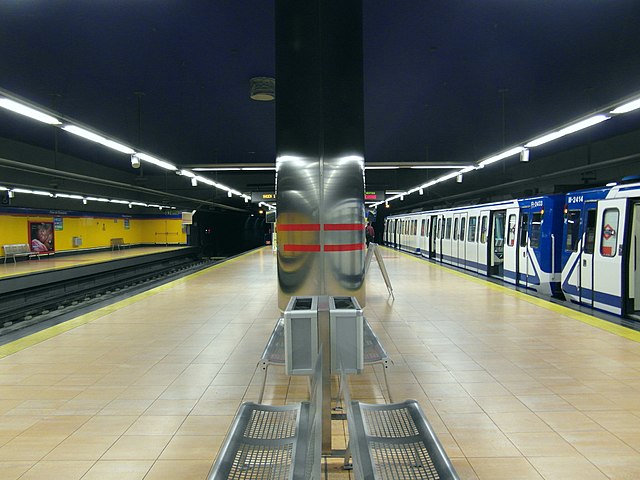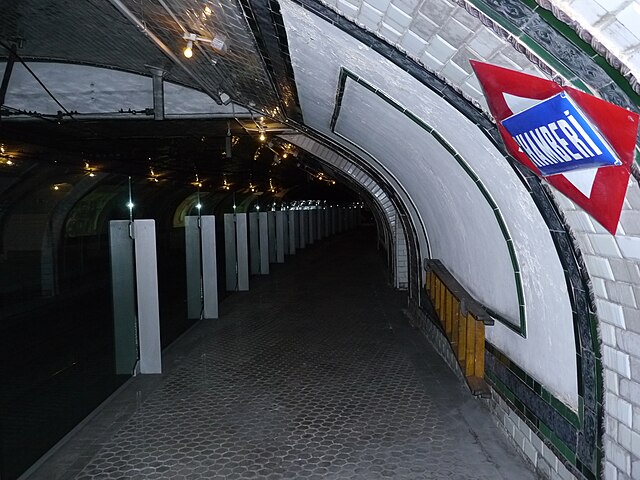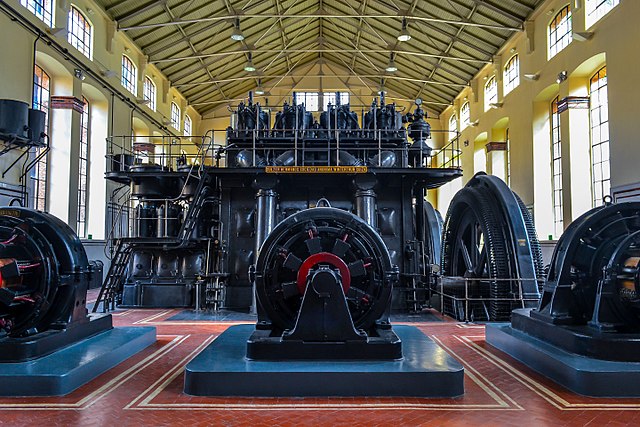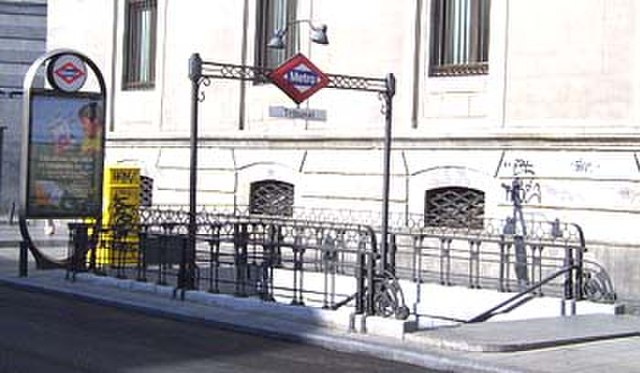Line 1 of the Madrid Metro is an underground metro line running from Pinar de Chamartín in the north to Valdecarros in the southeast, via Sol. Today it has 33 stations and spans 24 km (14.9 mi) from end to end.
Terminal at Pinar de Chamartín
The Madrid Metro is a rapid transit system serving the city of Madrid, capital of Spain. The system is the 14th longest rapid transit system in the world, with a total length of 293 km (182 mi). Its growth between 1995 and 2007 put it among the fastest-growing networks in the world at the time. However, the European debt crisis greatly slowed expansion plans, with many projects being postponed and canceled. Unlike normal Spanish road and rail traffic, which drive on the right, Madrid Metro trains use left-hand running on all lines because traffic in Madrid drove on the left until 1924, five years after the system started operating.
The closed Chamberí station on line 1
Metro de Madrid Diesel motors used for generating electricity before the Spanish Civil War
Typical Madrid metro entrance, designed by Antonio Palacios, at Tribunal station
Lago station in the old Line S (now Line 10) is one of the few surface stations in the Metro network.





